

Since the previous report there has been a minor change to our operational fleet: In order to allow the class 104 vehicle 50528 to stay at the Pentrefelin depot for some repair work to be carried out, the class 104 vehicles have been split and 50454 has been coupled to class 108 trailer car 56223 thereby recreating the hybrid blue/green class 104/108.
Work that has taken place on our railcars at Llangollen and Butterley since the previous report can be found in the 'Unit-specific work' section below.
The Wickham class 109 has been used for the majority of the passenger services that we have provided since the previous report. The following picture shows it at Carrog on Saturday 22 April...
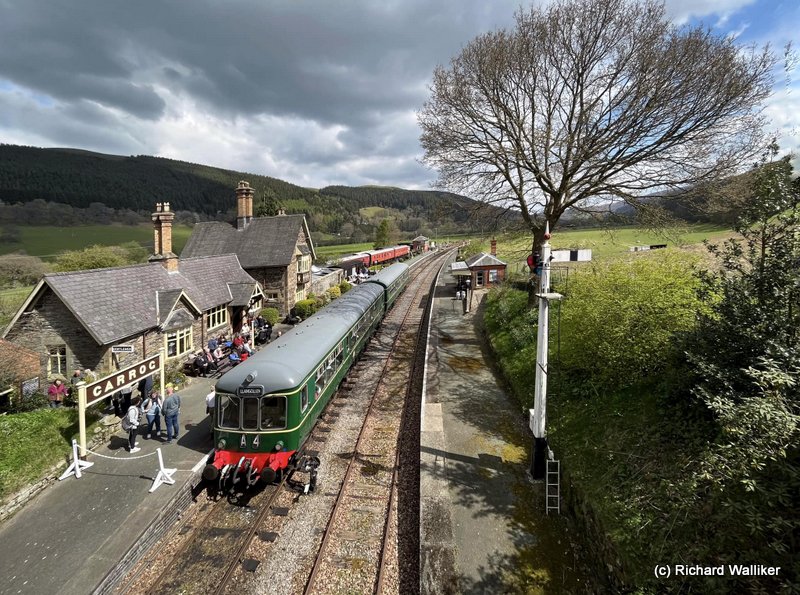
On 16 April the Wickham spent a day on the 'naughty step' (see the class 109 section below for the explanation) so the hybrid blue/green class 104/108 unit was used to provide the DMU component of the Steam/DMU 'B' timetable service. The following pictures show it passing the Pentrefelin depot with the 14.35 Llangollen-Carrog service...
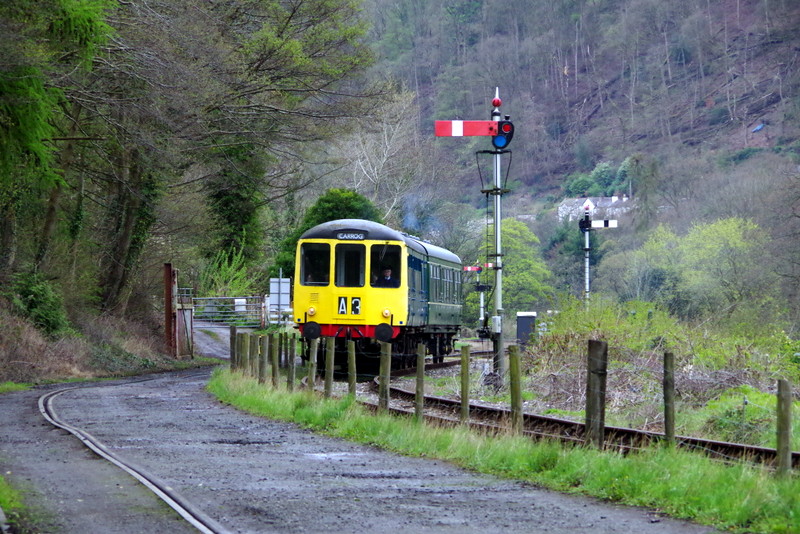

Prior to the temporary divorce of its two vehicles the class 104 also got to do a day's work on 6 April.
The 'panel beading' continued with much beading cut, drilled and fastened to the driver's side wall in the middle compartment. The large curved bead over the sliding door into the first class compartment was also fitted...
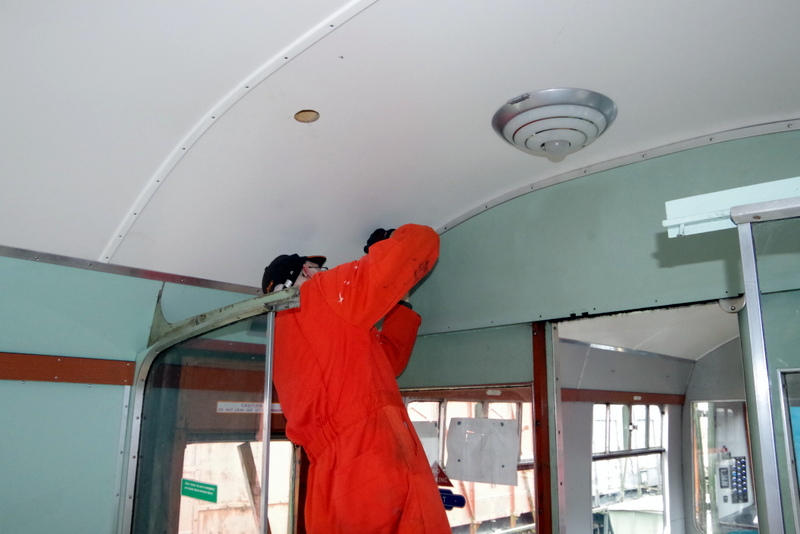
The following picture shows some cut-outs being made in exactly the right positions in order to fit the screws into the metal brackets at the top of the sliding door...
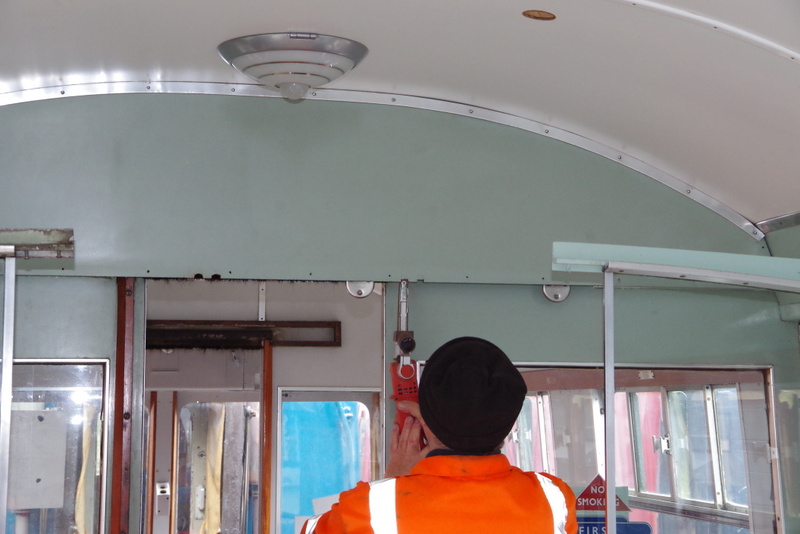
Once their job has been done the cut-outs will be hidden by some trim so the only people who will know that they are there will be the members of the restoration team and readers of this column with good memories!
The rear compartment was tidied in readiness for the construction and fitting of the wall panels...
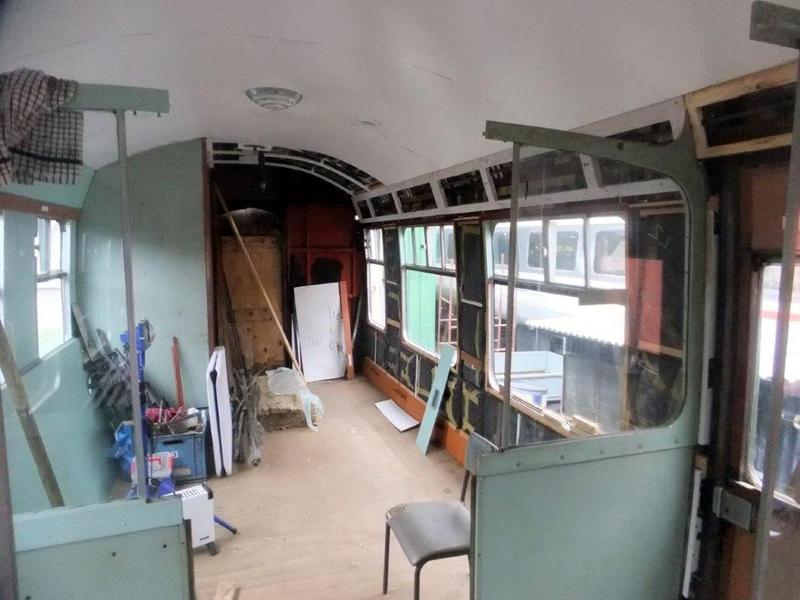
This mock up was constructed for use as a template for the heater vents...
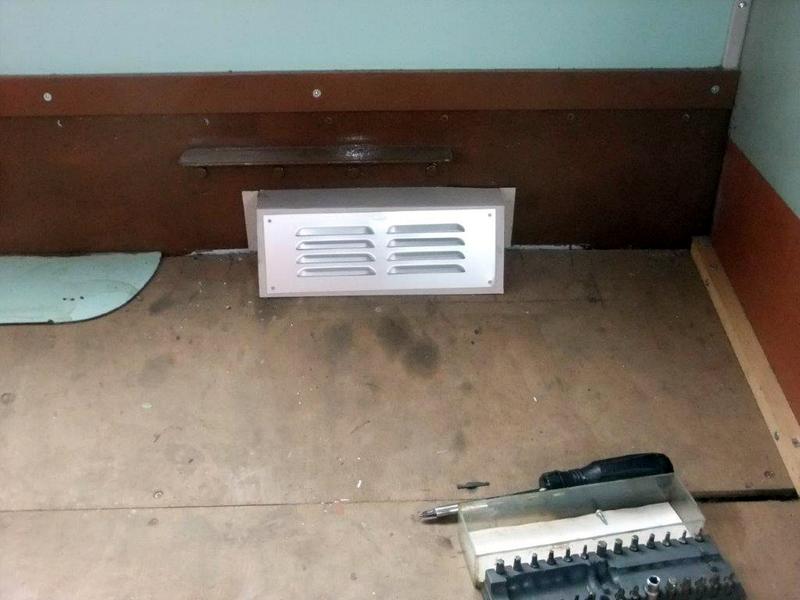
Unfortunately the original heater vents have not been seen since the asbestos was stripped out of the vehicle by contractors so it is thought that they may have ended up in a skip.
Work continued to prepare the roofs for painting...

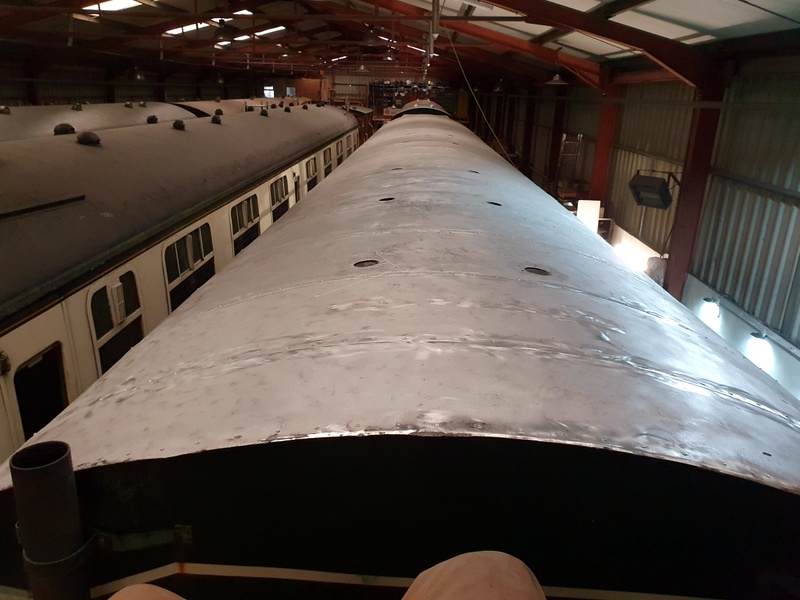
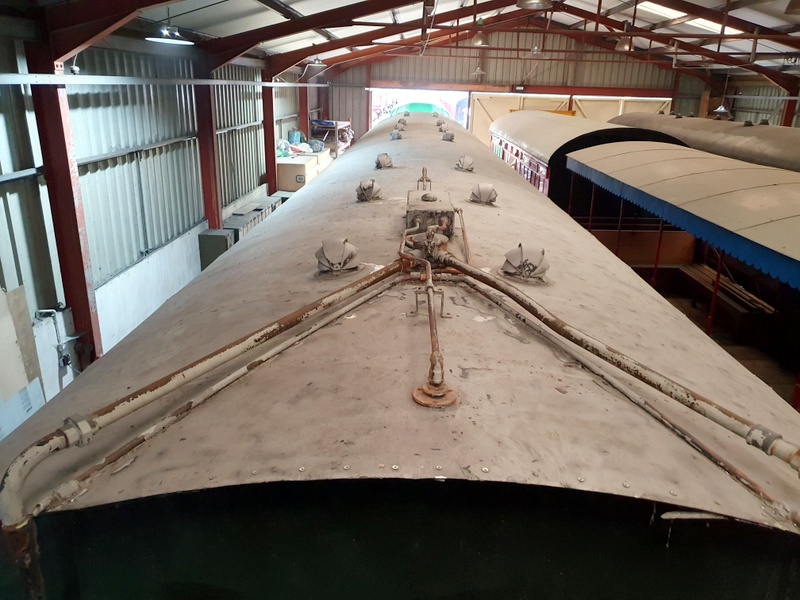
These roof vents were cleaned up and primed in order to provide enough to fit a full complement to 51933 and also to reinstate the two missing on 54504...
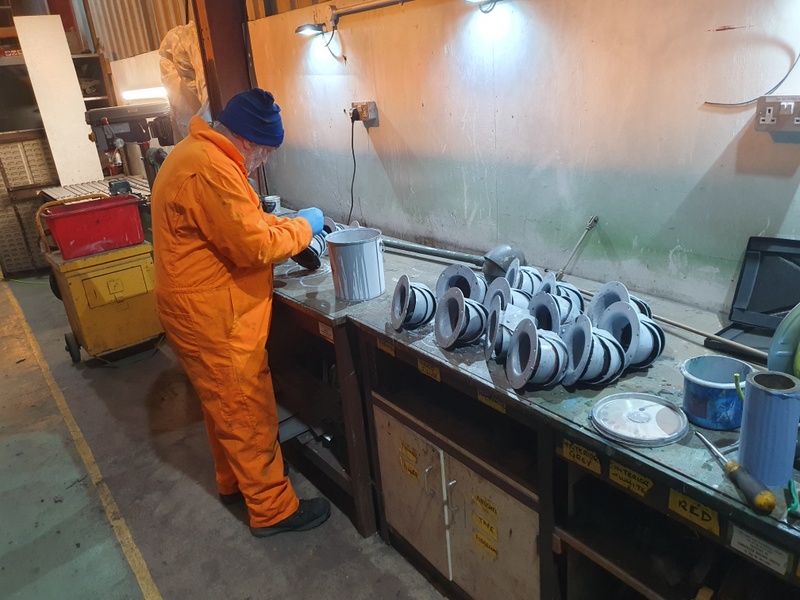
While out-and-about on Friday 17 April, the Wickham developed a fault that prevented the no. 1 engine from being shut down via the engine stop buttons in the cabs although it could still be shut down using the local stop button (next to the engine). Also the tachometer (aka rev counter) displays in the cabs would not show the driver what the engine was doing. The unit was therefore taken out of service so that the fault could be investigated during the weekend working meeting.
It turned out that the two problems were connected because the stop buttons in the cab will only stop an engine that is deemed to be running according to its tachometer signal. The problem was eventually traced to a faulty tachometer generator and fixed by replacing it with another one - something that could not be done until a specially modified spanner had been constructed!...
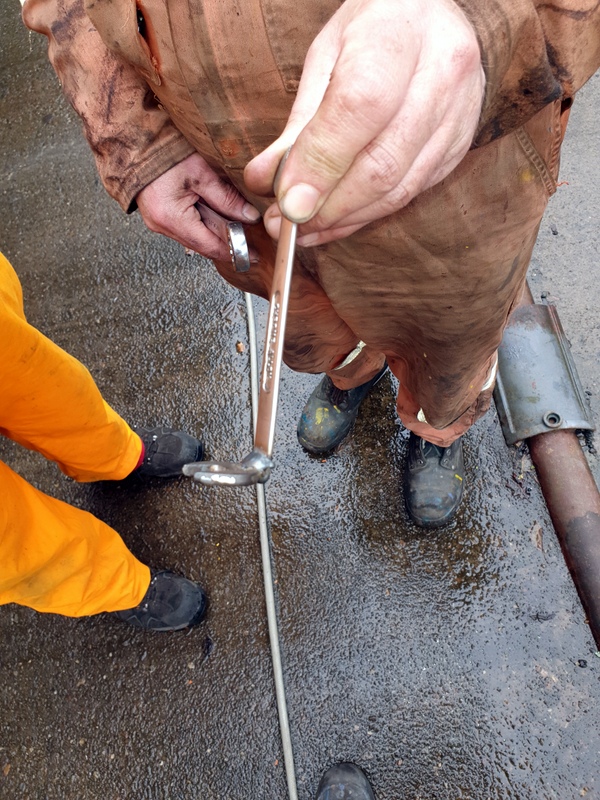
This is why it was needed...
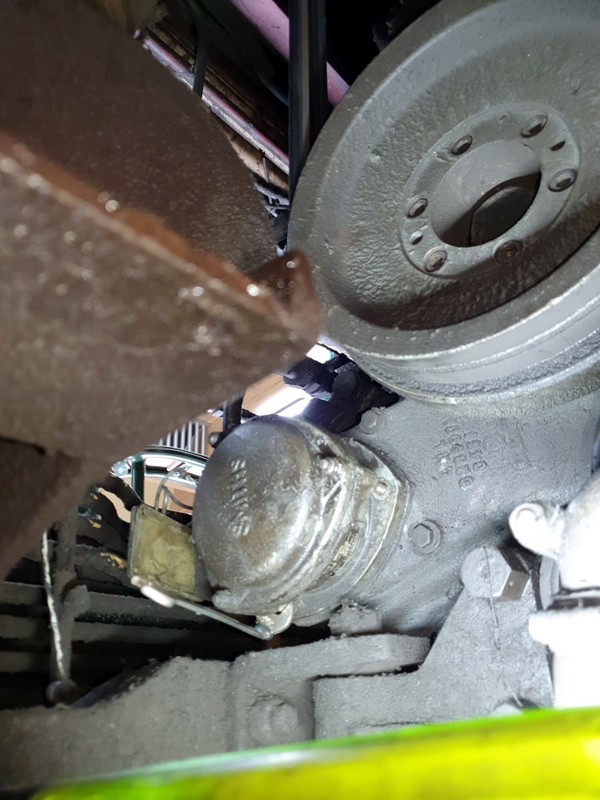
Thanks to Allen Chatwood, John Joyce, Mike Martin and Richard Walliker for supplying the pictures.
In one of their songs the Pet Shop Boys gave the advice to Go West (where the skies are blue, in the open air, life is peaceful there etc.) and we did just that on Tuesday 4 April when a 4-car unit comprising the Wickham class 109 and the class 104 pushed our westerley limit and became the first DMU to reach the new Corwen Central Station. It had been arranged as a gauging run to ensure that all of the vehicles played nicely with the platforms and vice versa. Prior to that our railcars had only ever ventured as far as the erstwhile temporary station at Corwen East.
The following pictures show the train sampling the platforms at the new station...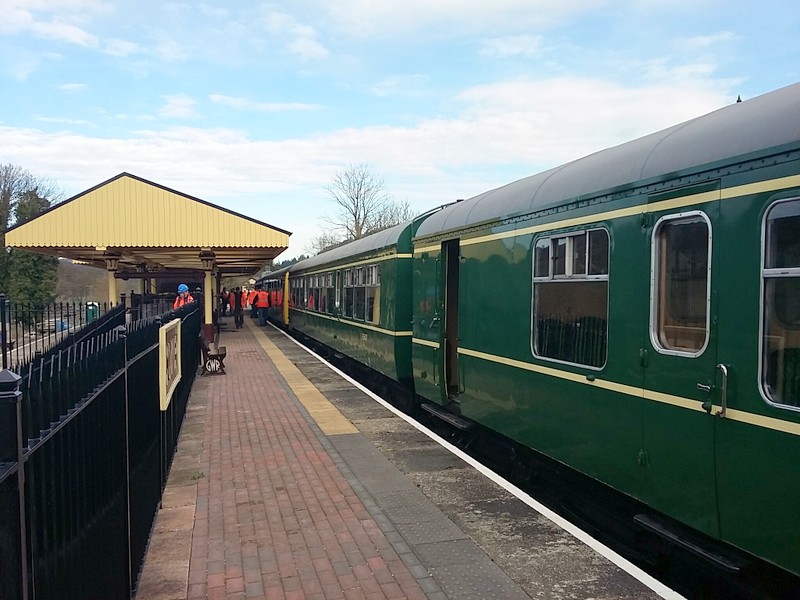
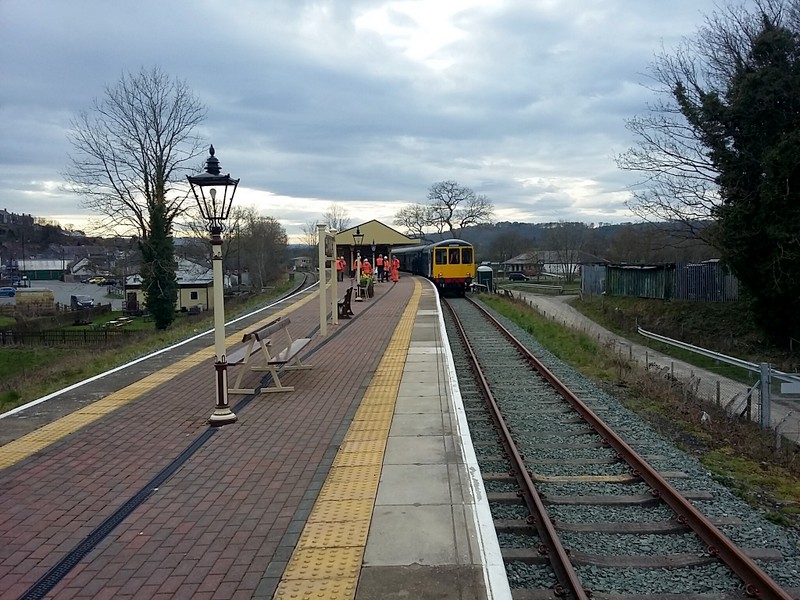
Working solo the class 104 has also carried out more usual duties by providing the 'A' timetable passenger services that have so far taken place during April.
As the guardians of 60-year-old equipment we are conscious of the fact that spare parts are becoming increasingly difficult to find and, with that in mind, our board members are always on the look-out for opportunities to obtain more. The result of one of their successes was the delivery, on Saturday 1 April, of a spare class 108 power bogie plus four spare drive wheelsets...
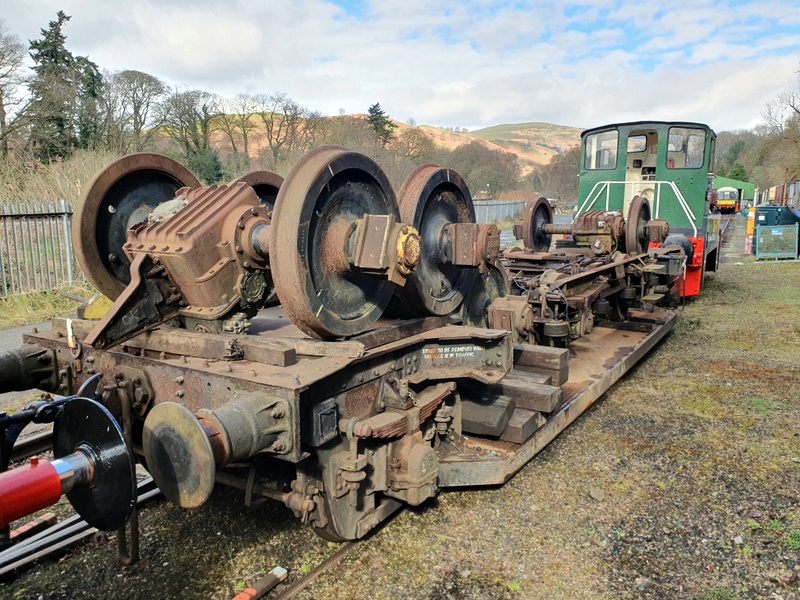
They were carefully unloaded and placed in an area adjacent to our siding at Pentrefelin in accordance with our delivery instructions...

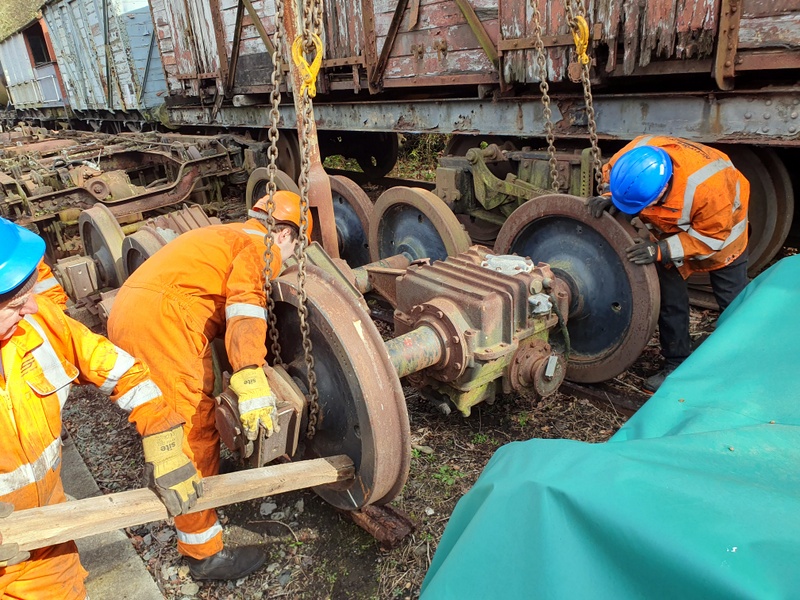
Work that has taken place on our railcars at Llangollen and Butterley since the previous report can be found in the 'Unit-specific work' section below.
The team continued their work as 'panel beaders' by cutting and fitting ceiling and wall beads...
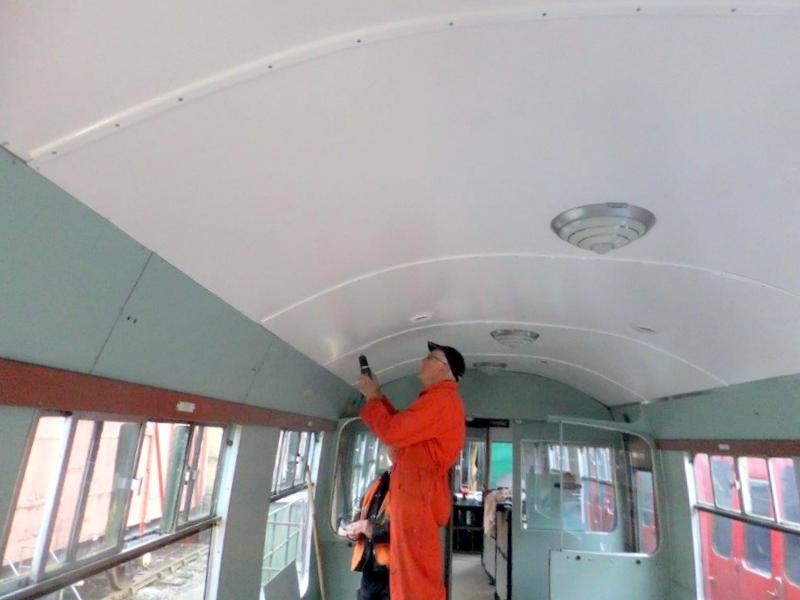
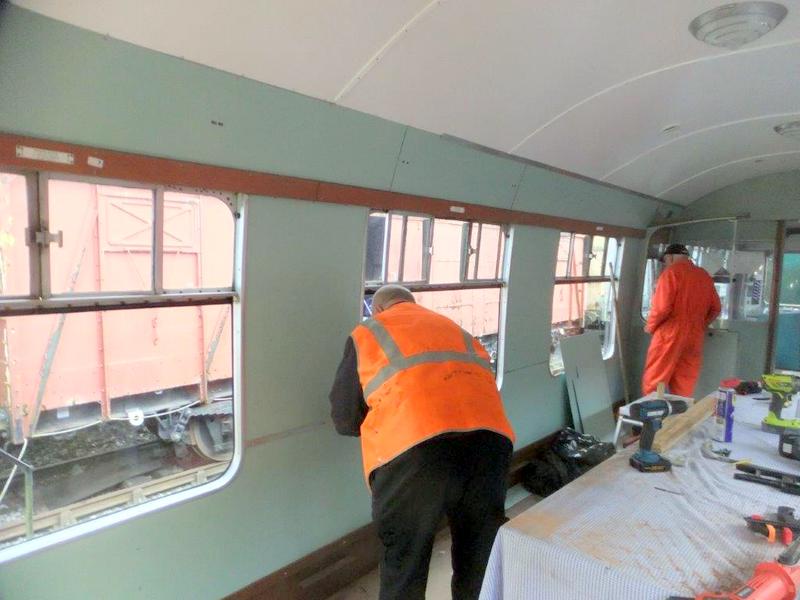
Class 108 (51933/54504)
Following the recent shotblasting of the roofs by contractors, the unit was rinsed to remove the debris that had exposed weaknesses in the plastic sheeting (thanks to high winds)...
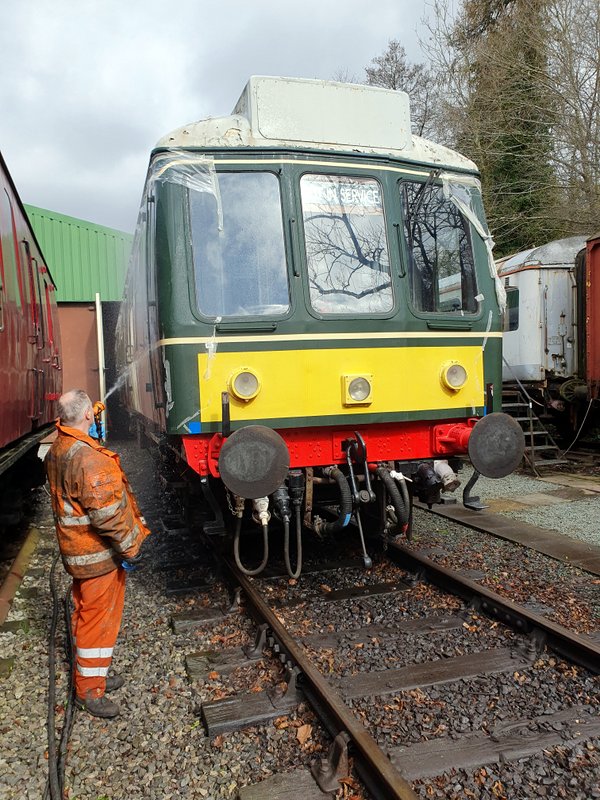
...the plastic sheeting was removed (albeit not without difficulty) and work then began on getting the roof ready for painting.
One of the volunteers had a 'rivetting' day replacing a few hundred missing rivets across the two vehicles...
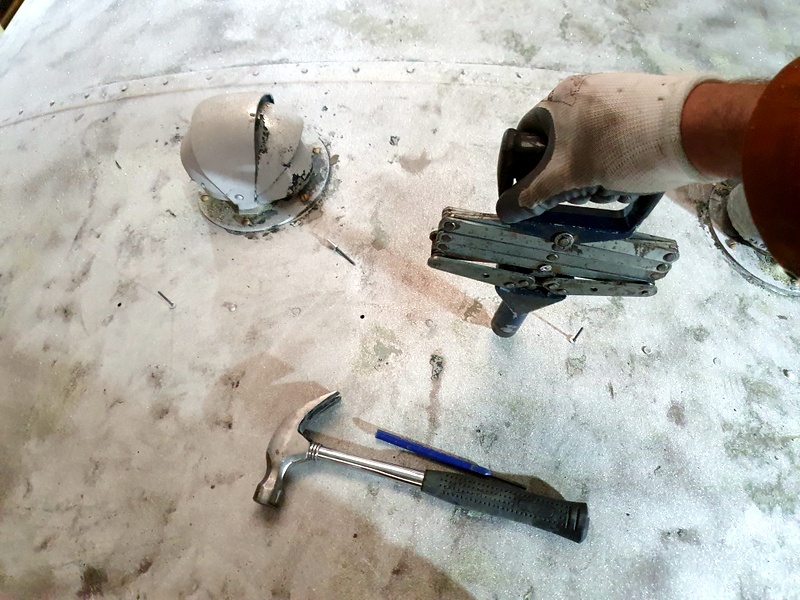
...as well as resealing ventilators and blanking plates. This ventilator was clearly providing much more ventilation than required and deemed to be well past its use-by date...
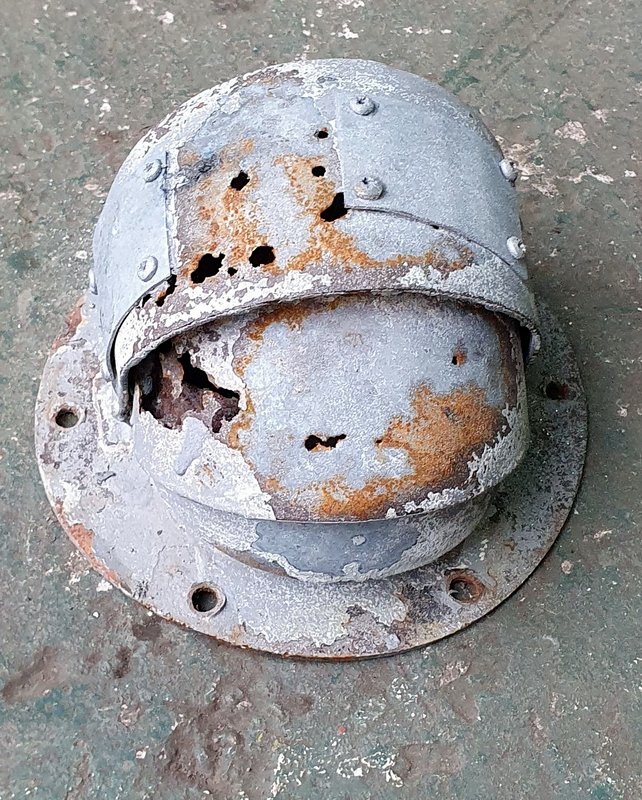
The next episode will see the resealing of more ventilators and blanking plates and dealing with the back of each fibreglass cab roof dome where it seals (or doesn't in this case) to the roof.
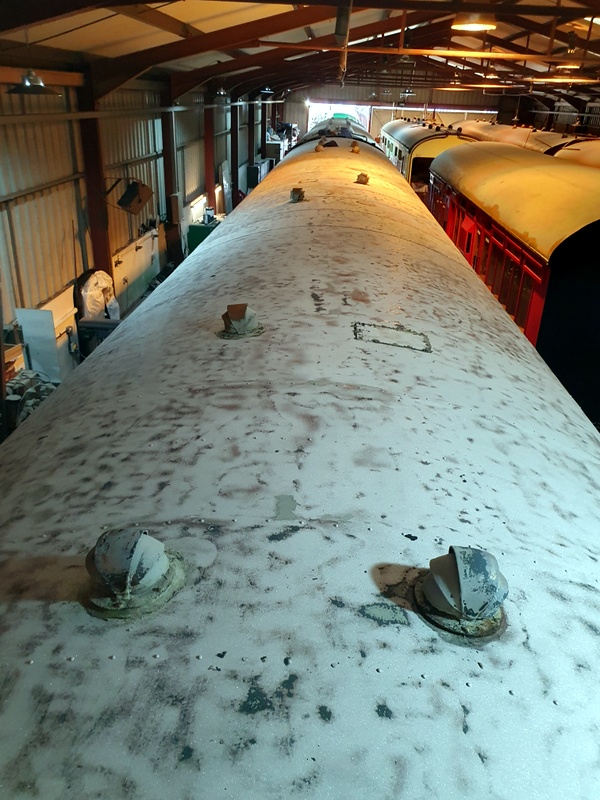
The painting and fitting of the new grab handles to the doors of the guard's van was completed and will make life much easier and safer for guards who have to board/alight from/to track level...
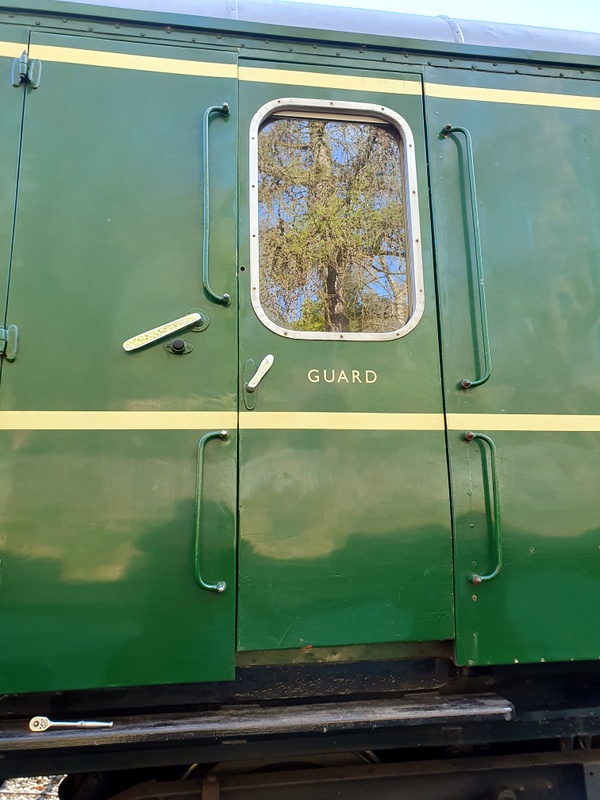
As luck would have it we even managed to persuade a passing guard to carry out an unofficial opening ceremony...
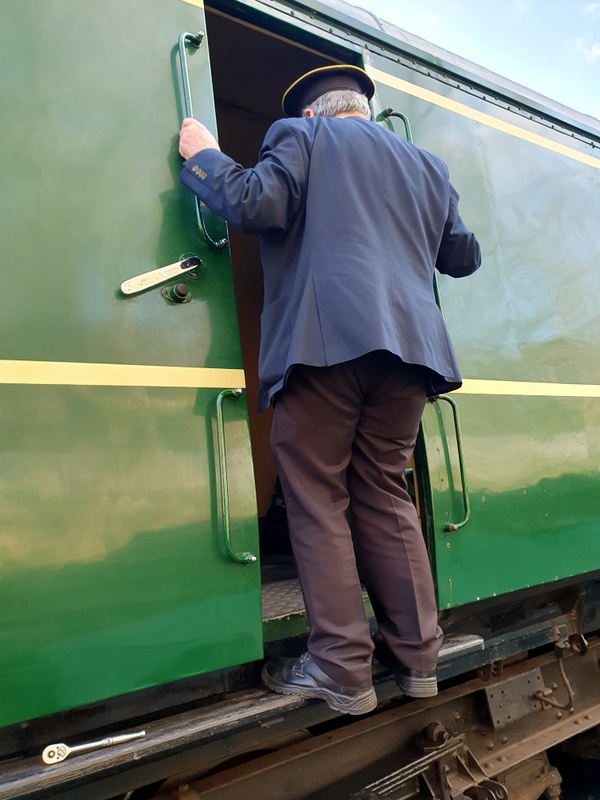
The reverse electro-pneumatic (EP) valve, shown in the following picture, misbehaved and had to be dismantled, cleaned and reassembled.
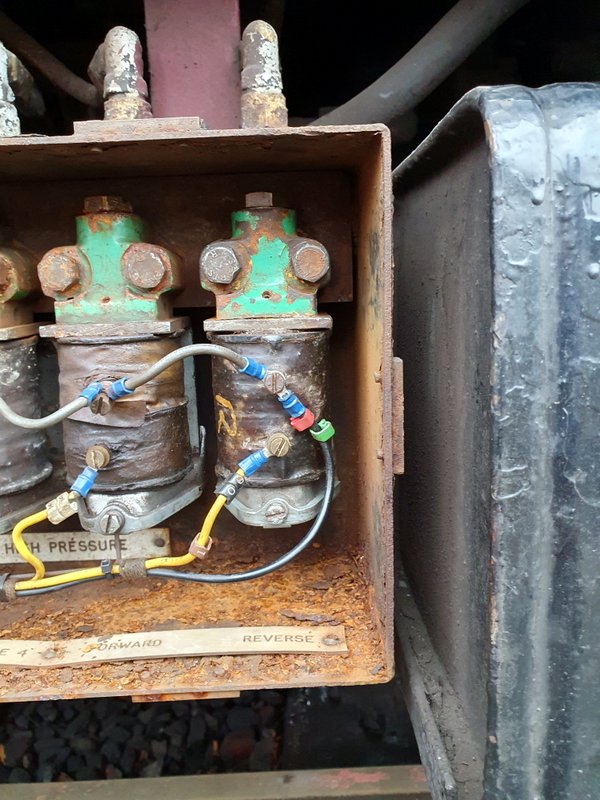
An EP valve responds to an electrical control signal from one of the driver's controls in the cab and turns on or off a supply of compressed air to work the component being controlled - in this case the selection of the reverse direction in the final drive. Unfortunately it only takes a small speck of dirt in the wrong place to make an EP valve misbehave. Dismantling and cleaning nearly always does the trick although it is very unusual to spot the offending item. This occasion was the exception to the rule because the person doing the dismantling reported the discovery of a large piece of 'crud'!
The reproduction works plates were fitted to the vehicles. Here is one of them...
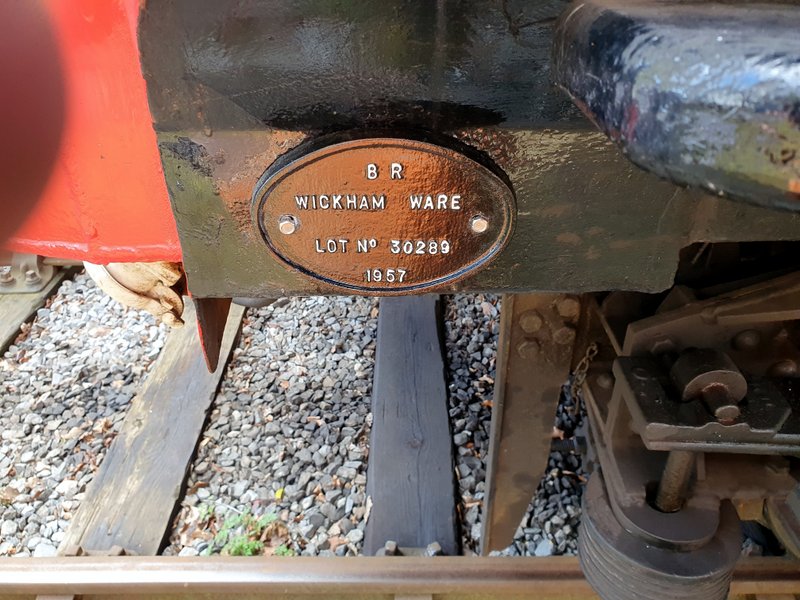
The first of the window frames was installed in a half window in the first class section...
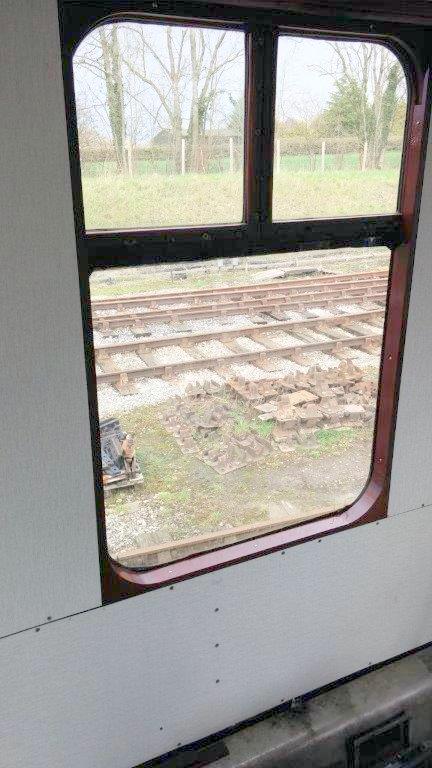
The floor panels in the middle compartment along with the flooring in the first vestibule were replaced along with the 3.5mm plywood to lift the floor up to the correct height...
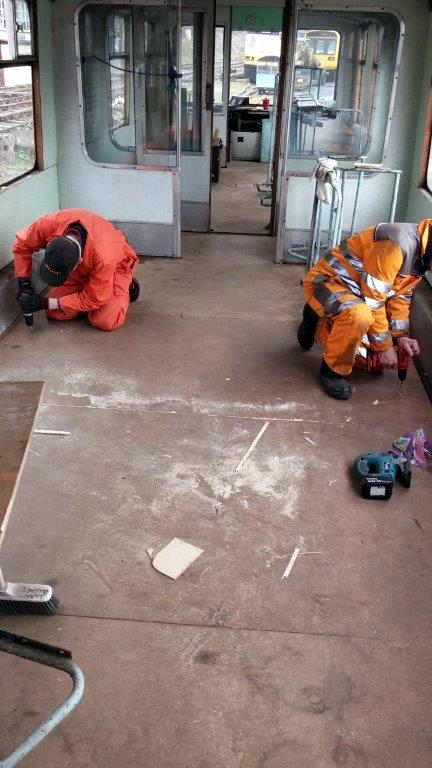
While searching for the timber sections for the small windows the missing metal brackets that hold the passenger communication (aka passcom) valve in place in the cab were found so they were installed in their rightful position...
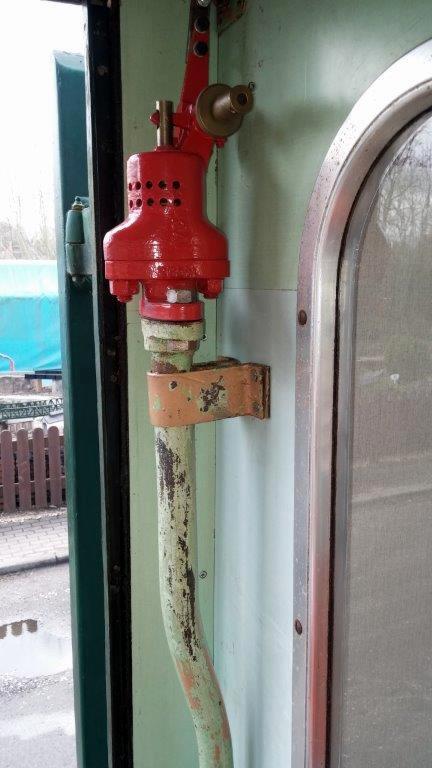
Thanks to Allen Chatwood, John Joyce and Graham Parkin for supplying the pictures.